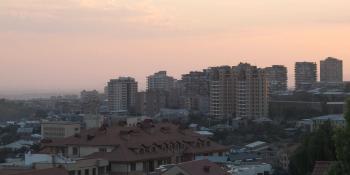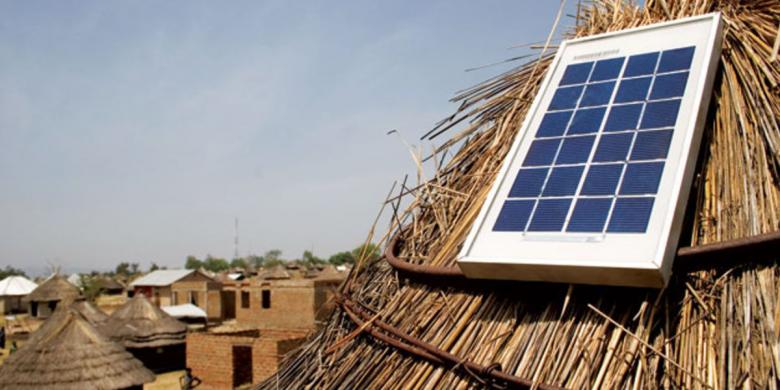
Tackling energy poverty by market development
Lessons from Eastern Europe
When it comes to implementing projects, there is a common held opinion that a ‘one size fits all’ approach does not exist. There are, however, rare occasions where one is likely to come across practices that would actually work well for projects implemented by different partners, or in different geographies.
In April this year, I attended Habitat for Humanity’s conference on ‘Reducing Energy Poverty by Energy Efficiency Projects in Residential Buildings: The Case of Eastern Europe’. Held in Brussels and organized by Habitat for Humanity with the support of USAID, the conference sought to promote a better understanding of residential energy efficiency among EU policy makers; introduce improved and tailor made EU policy measures addressing energy poverty and security, and advance a clearer understanding of how investing in residential energy efficiency will contribute to reducing energy poverty in the Eastern European Western Balkans regions.
The conference also sought to build on the experience of Residential Energy Efficiency for Low Income Households (REELIH), a project implemented by Habitat and supported by USAID. REELIH adopted market development approaches in addressing energy poverty. The project defined energy poverty as a severe form of poverty housing partly caused by the discrepancy between low family incomes and unaffordable heating bills. High energy bills are a result of high energy prices, poor insulation of buildings, bad consumption habits and outdated equipment[1].
REELIH project took a market-based approach to this challenge. This was achieved by involving all stakeholders who could promote, create, finance and implement energy efficiency projects, for purposes of contributing to the improvement of living conditions of families with low income. Also included were stakeholders who could develop sustainable models of Energy Efficiency in residential buildings- that save on energy costs and reduce air pollution and climate change effects.
What worked well?
To achieve this, the project engaged a combined focus on Policy, People & Finance. Speaking at the conference, Robert Archer, former Senior Policy Advisor at USAID, explained that policy, people and finance are inextricably tied together, thus the need for the three-pronged approach.
The focus on policy helped to address challenges caused by market failures and promote an enabling environment. In Armenia, for example, the local municipality provided up to 40 % subsidies on energy-efficient retrofits. In Bosnia & Herzegovina, the local government provided subsidies between 15-30%. Another area of focus in developing policy in this region has been energy price reforms. Energy price reforms continue to be an area of interest for all stakeholders.

The project also employed a people-centered approach in eradicating energy poverty. At an early stage, the project noted the unwillingness of the homeowners to participate in the proposed interventions. Home Owner Associations were then identified as a key link to reach the people. The Home Owner Associations participated in the project and lobbied their members to do the same. The REELIH team also identified the actual needs of the target group and designed appropriate energy efficiency solutions. Understanding the true value proposition for the target group and raising awareness about it was also important. For example, the team quickly understood that communicating health and comfort as a benefit of energy efficiency retrofits resonated well with homeowners as compared to communicating energy efficiency.
Even with subsidies, most homeowners still could not afford energy efficient retrofits for their houses. Among the stakeholders identified were financial institutions, which were invited to design financing models which would enable more homeowners to afford energy efficiency retrofits.
Though the definition of energy poverty may vary with context and geography, the lessons shared here would apply in Sub-Saharan Africa. The national electrification rate in Sub-Saharan Africa stands at a paltry 35%; with 632 million people lacking electricity[2]. The challenge of energy poverty in Sub-Saharan Africa can then be defined as a lack of access to energy, rather than a lack of energy efficiency. Most low-income households are still not connected to national grid. To tackle this challenge, most governments and stakeholders are promoting alternative sources of energy at both household and national levels. Initiatives vary from targeting solar housing systems to households; to installing windmills which generate power and are fed to the national grid.
To close this energy access gap, experts in this sector will need to keep designing, testing and implementing market-based models with a focus on policy, people, and finance. The underlying factor would be to ensure that all stakeholders understand the particular energy needs of Sub-Saharan Africa, and work with governments to develop policies that address those needs. The private sector should be encouraged to design affordable need-based solutions; with Finance Institutions designing and providing affordable financing options for both the private sector and targeted users of designed solutions.
[1] https://getwarmhomes.org/our-approach/energy-efficiency-interventions/
[2] IEA, World Energy Outlook 2016
Written by Masua Matua, Market Systems and Business Development Specialist, Habitat for Humanity EMEA